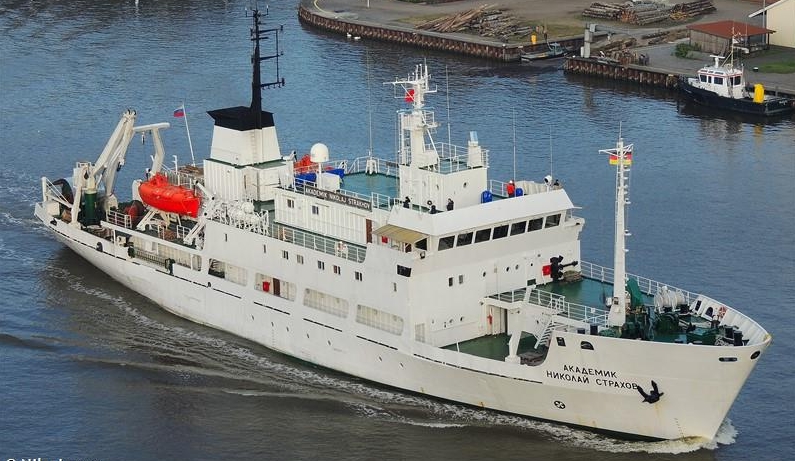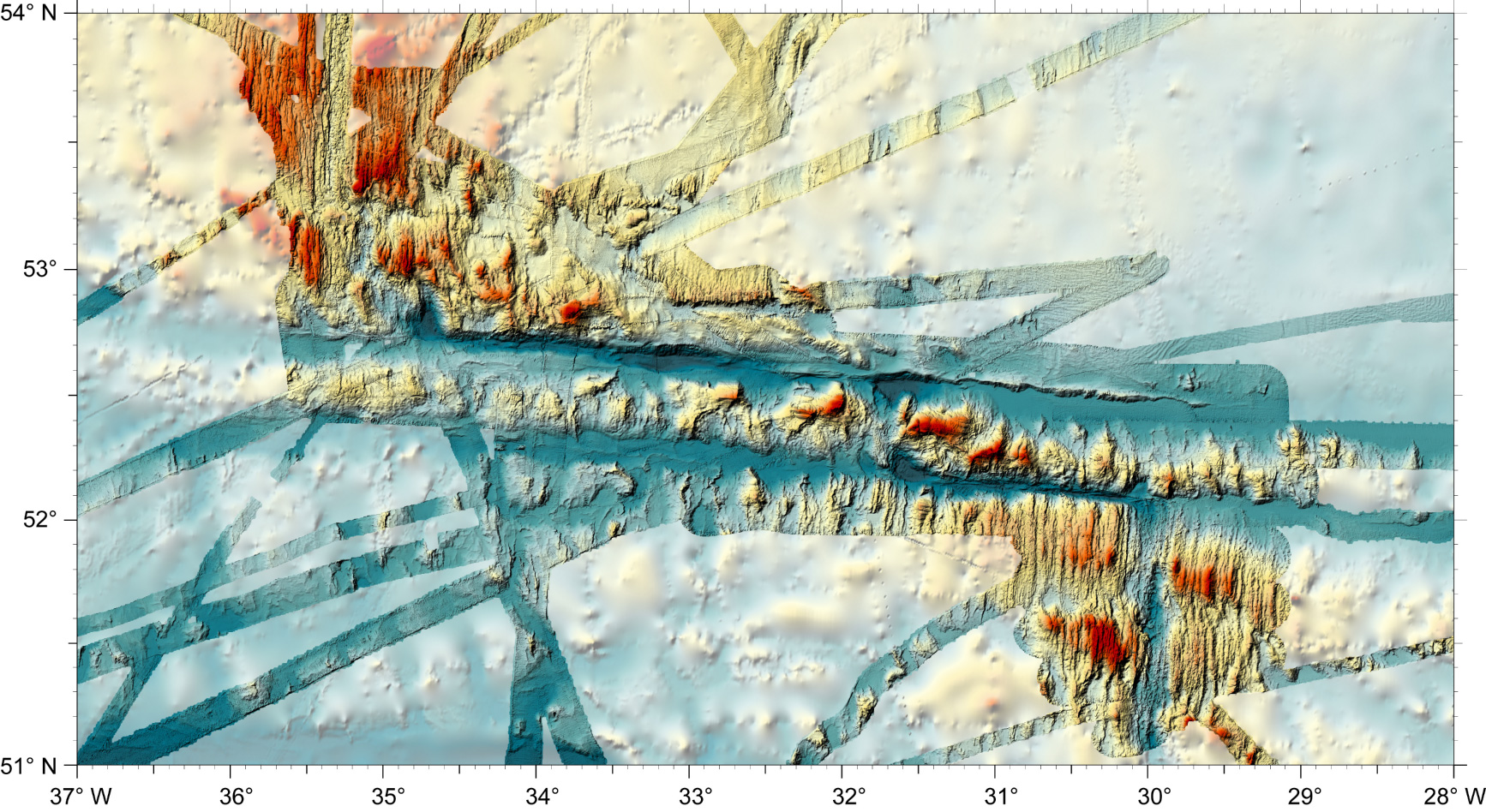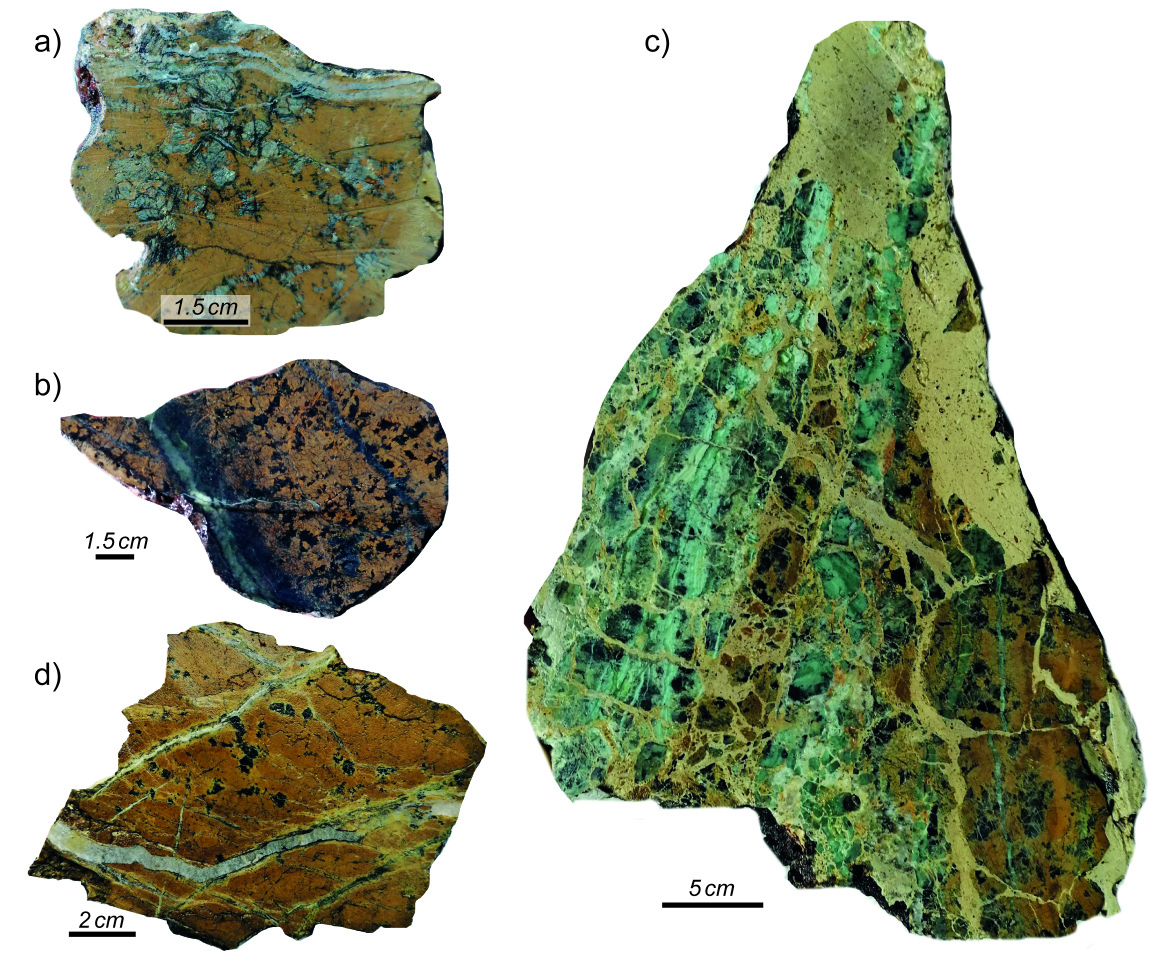Charlie Gibbs Transform System (North Atlantic)
R/V Akademik Nikolaj Strakhov

Scientific rationale and cruise objectives
As comparative study area to Doldrums transform system (7°-8° N) we explored in 2020 with the R/V Akademik Nikolay Strakhov the right-lateral Charlie Gibbs transform system: the major transform zone along the MAR between the Iceland and the Azores (Fig. 1). The Charlie Gibbs offsets left-laterally the MAR axis, between 52°-53° N, by about 340 km and includes one long-lived 40 km-long intra-transform spreading centre (ITR). The ~140 km-long southern transform strictly follows the Wilson’s definition (Wilson, 1965) of an oceanic transform fault consisting of a single narrow strike-slip zone that fits the small circle path with an rms error <1 km about the pole of rotation (Searle, 1981). In fact, a single very narrow lineament, trending 95° N, runs continuously along the active section marking by the present day strike-slip principal displacement zone (Fig. 2). The active part of the transform valley is almost free of sediments, although the sedimentary cover increases rapidly in the fracture zone valley to the east. The northern transform, in contrast to the southern one, displays a greater seismicity with large magnitude earthquakes and was affected by seven M≥6.25 earthquakes over the past 100 years (Aderhold and Abercrombie, 2016). In the 20 km-wide active valley of the northern transform a large sediment infill with thickness masks the basement structures (Searle, 1981). A 40 km-long north-south trending ITR joins the two major Charlie Gibbs transforms displaying a large positive central magnetic anomaly coincident with the valley. The single, straight southern transform fault breaks up into a number of splayed faults bending northward toward the ridge segment. The ITR seafloor has a minimum depth of 3300 m and shows two local deeps of over 4500 and 4600 m occurring at the northern and southern intersections with the two transforms (nodal basins). Geochemical data from a limited number of dredged samples in the Charlie Gibbs region (Sigurdsson, 1980; Schilling et al., 1983) show clear evidence of transform fault cold effects and clear field separation of the samples from the northern and southern ridge constrained by an abrupt discontinuity in major elements, trace elements and isotopes as the transform is crossed (Schilling et al., 1983; Chernysheva and Kharin, 2009).

Megatransform evolution includes intra-transform spreading centres (ITRs) formation, in fact a megatransform system such as Romanche or Andrew Bain may evolve under an extensional regional stress field from a multi-faults strike-slip system with a wide area of deformation toward a multi-transforms system with transforms joined by several short ITRs. However, ITR formation and evolution is still debated, in particular how they can be active for a long period of time, given the strong transform-edge cold effect. The study of the long-lived ITR within the Charlie Gibbs transform offers the opportunity to clarify these aspects and provides additional constraints to megatransform evolution. Additionally, compositions of rock samples along the axis and the valley walls of the Charlie Gibbs ITR may allow us to consistently compare the actual lava composition with that predicted by our models. Finally, melt migration models suggesting that incipient melts generated directly below an ITR may not necessarily erupt at that ITR but migrate laterally due to enhanced pressure gradients. The close proximity of the ITR at Charlie Gibbs to the southern MAR segment provide a good opportunity to model this phenomenon and may help explain the variability of incompatible trace element concentrations found between samples collected within the different domains of this transform system.
Although, this region of the MAR was investigated mostly by geophysical surveys during the seventies (Fleming et al., 1970; Vogt and Avery, 1974; Lonsdale and Shor, 1979; Searle, 1981), it is still poorly known lacking of a systematic rock sampling along the transform and the ITR walls, and of surveys adopting modern geophysical techniques for data acquisition. In order to close this gap, we propose to carry out multibeam, gravity, magnetics, reflection seismic and rock dredging surveys with the R/V Strakhov of RAS. The project will involve the following steps a) field work along the entire Charlie Gibbs transform; b) processing the geophysical data obtained at sea; c) laboratory analytical program on a large collection of ocean floor rock samples, including mineralogy, major and trace element composition as well as Nd, Sm, Sr and Pb isotopic chemistry; d) rock age determinations by U/Pb isotope geochronology in zircons; f) quantitative modelling of magma genesis and melt migration, and differentiation in crustal magma chambers beneath ITRs.
Rock Sampling

Volcanics

Gabbros

Ultramafics

